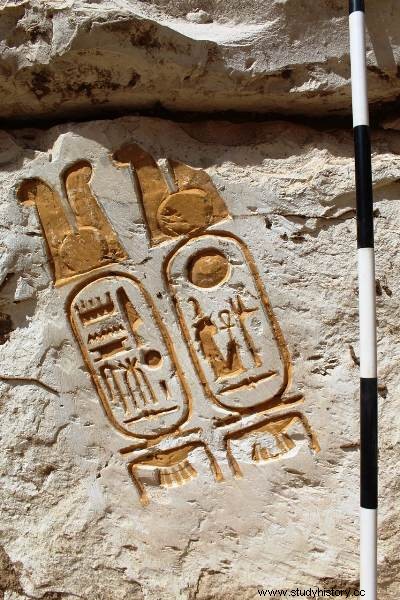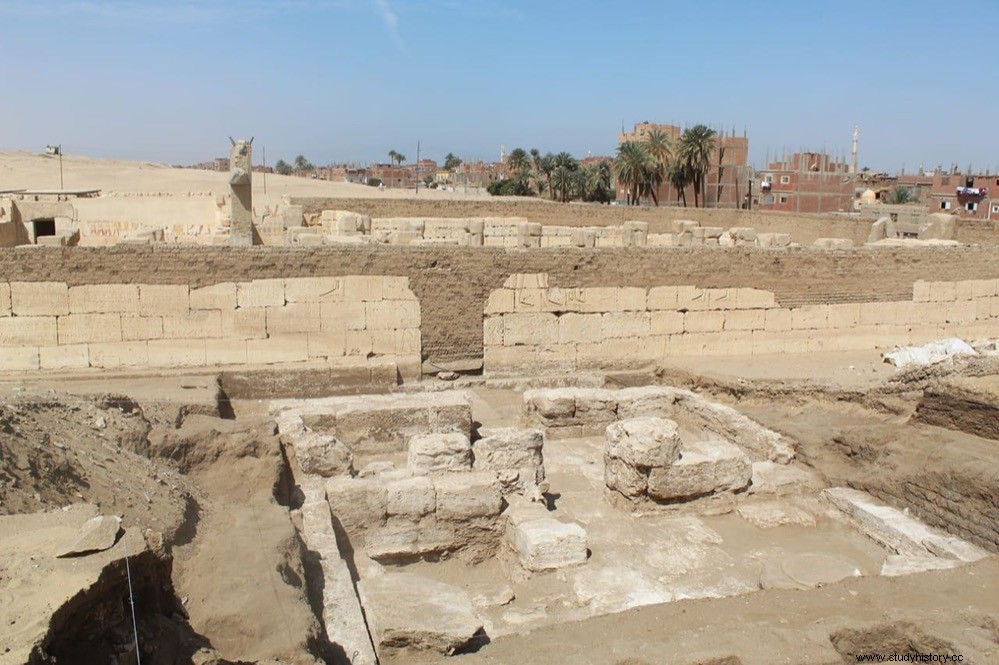A team of archaeologists from New York University, working on the temple of Ramses II in Abydos, discovered the foundation stones of the building, according to the Egyptian Council of Antiquities.

The discovery came after finding the royal palace annexed to the pharaoh's temple, discovered about 160 years ago. This palace almost exactly reproduces the design of the temple of Seti, the father of Ramses II, located about 300 kilometers to the south.
The palace has walls of limestone and adobe, with the floor covered with limestone tiles. In a second room, a column and sandstone steps inscribed with the pharaoh's name were also found, as well as rocks with images of stars that are believed to have decorated the ceiling of the room.
Opposite the southwest entrance of the palace, a stone path leads to another recently discovered building.
This is the first time in history that an archaeological team has discovered the foundation and inauguration stones of an Egyptian temple, both of which bear the name of Ramses II.
According to Mustafa Waziri, Secretary General of the Supreme Council of Antiquities, the discovery will for the first time change the shape and map of the temple, discovered some 160 years ago. This new finding will allow a better understanding of the arrangement and shape of the temples and their accessories in the period of the Ramses .

The temple of Ramses II at Abydos is modest compared to that of Seti I, although it had a number of historical scenes on the outer walls depicting the deeds of the pharaoh. Only the lower parts remain, including scenes from the Battle of Qadesh against the Hittites in 1274 BC
